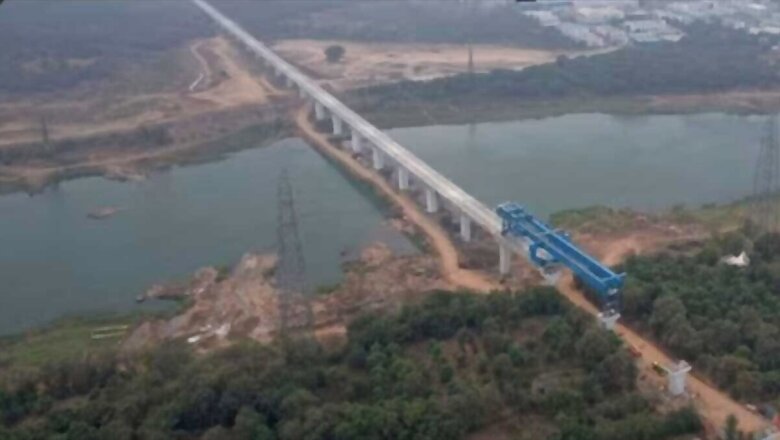
views
In what is being termed a “major milestone”, the National High Speed Rail Corporation Limited (NHSRCL) has completed the first mountain tunnel in a short span of 10 months using the New Austrian Tunnelling Method (NATM) in Valsad district of Gujarat for the Mumbai-Ahmedabad High Speed Rail Corridor (MAHSR), also known as the bullet train project.
In a statement, the NHSRCL—the body undertaking the construction work of the project—said that the tunnel is located around one kilometre away from Zaroli village of Umbergaon taluka in Valsad.
“The tunnel structure comprises a tunnel, tunnel portal, and other connecting structures like tunnel entrance hood. NHSRCL has achieved a major milestone with the breakthrough of the mountain tunnel,” it said.
The mountain tunnel is 350 metres long and 10.25 metres high. With a diameter of 12.6 m, the tunnel is single-tube horse-shoe-shaped with two tracks.
In total, the MAHSR corridor will have seven mountain tunnels and all will be constructed using the NATM.
WHAT IS NATM?
NATM includes marking of drill holes on the tunnel face, drilling of holes, charging of explosives, controlled blasting, removal of muck (blasted rock pieces), and installation of primary support, which includes steel ribs, lattice girder, shotcrete, and rock bolts based on the type of rocks as assessed by geologist after each blast.
In simpler words, it can be defined as a method to stabilise the tunnel perimeter with the help of sprayed concrete, anchors, and other support.
WHERE IT IS USEFUL
Also called a sequential excavation method, NATM came to the limelight during the tunnelling in the Austrian Alps. It has proved to be very useful in sophisticated and diversified geological conditions where forecasting of the rock mass is difficult due to rapidly changing geology.
The technique was developed around the 1960s in Austria, based on the idea of using the geological stress of the surrounding rock mass to stabilise the tunnel itself.
It is preferred as the strength of the ground around the tunnel is deliberately mobilised to the maximum extent possible. The mobilisation of ground strength is achieved by allowing controlled deformation.
Even the Udhampur-Srinagar-Baramulla Rail Link (USBRL) project, which will provide train connectivity to Kashmir, is being built using this technique.

















Comments
0 comment